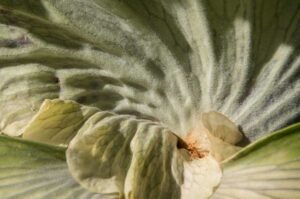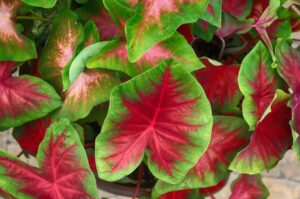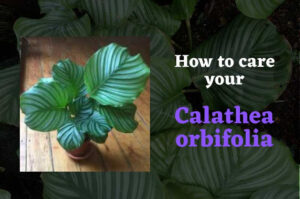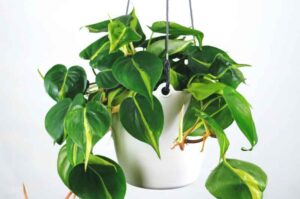Monstera dubia –A Complete care guide on the Shingle Plant
Monstera dubia is a climber plant originated from the tropical forests of South and Central America. It is now loved by many plant enthusiasts due to its striking foliage, and dramatic transformation at the mature stage. Monstera dubia plant is a little bit difficult to get, but once you get one, it is worth adding in your indoor plant collection.
Beautiful heart-shaped leaves of Monstera dubia are amazingly decorated with light and deep green colors. The base is the deep green on which striking patterns of light green color is there. This plant even looks different due to its multicolored foliage, and also the position of the leaves on the stakes.
The leaves lie flat against the stakes or poles or trees, on which the Monstera dubia creeps, looking like a shingle on a house. Therefore, it is also commonly known as The shingle plant.
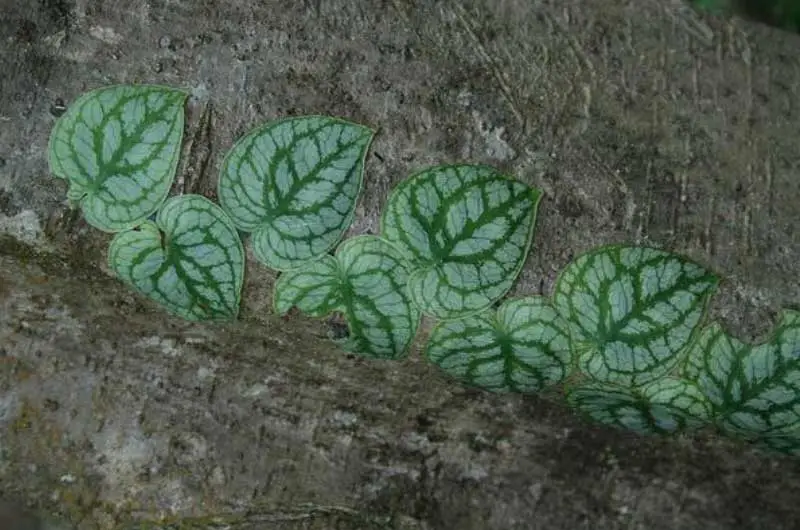
Transformation of Monstera dubia
In their natural habitats like the tropical forests of Central and South America, the Monstera dubia grow on the trees. When they have grown to a significant height, they are exposed to the sun and their leaves become fenestrated. The small variegated heart-shaped leaves were transformed into large leaves with deep green color and huge fenestration.
This type of transformation is not usually seen in the indoor conditions, because the plant cannot get natural direct sunlight, like the plant is getting in its natural habitat. If you can mimic the same conditions as in the tropical forests and the plant gradually gets some amount of sunlight when it gets mature enough, then the plant can undergo this type of massive transformation.
Some details about the Monstera dubia plant
- Botanical name- Monstera dubia
- Common name- The shingle plant
- Family- Araceae
- Origin- Central and South America
- Special character- Striking multicolored foliage with a definite pattern at the young stage, and the transformation when the plant matures.
- Soil- Plants need well-drained fertile soil.
- Temperature- Plant grows well in a temperature range of 600 F to 800 F (150 C to 270 C)
- Light- Bright indirect sunlight is ideal for this plant.
- Humidity- Plant-like to sit in a humid environment.
- Watering- Plant needs moist soil, but it should not be overwatered.
- Fertilizer- You can use indoor liquid fertilizer.
- Repotting- This needs to be done once in two years.
- Propagation- Plant is propagated using stem cutting.
- Toxicity- The plant is toxic for humans and animals.
From where to buy Monstera dubia
The Monstera dubia plant is not available widely at every store. You can request the local garden centers and nurseries if they can arrange this plant for you. Also, you can search this on social media platforms.
The simplest way to find it out is just search in Google. It will show the results where the plant is available. Just cross-check, that you are buying the right plant at the right price by analyzing prices in two to three different sites. If you are getting a genuine deal, then grab it.
Generally, this plant comes at a slightly premium price than other house plants.
Now let’s discuss how to grow these shiny beautiful plants
Complete care guide on Monstera dubia, the Shingle plant
This is a climber, so initially, you have to arrange a pole or trellis. Using the coco peat poles will help the aerial roots of the juvenile plant to hold well, and it will also provide moisture to the plant for a longer period of time, after wet once.
Soil for Monstera dubia
A soil with good organic matter and good drainage will be perfect for this plant.
The roots of Monstera dubia never like to sit on a suffocated anaerobic condition. Therefore, the soil must have proper aeration inside it, with the exchange of O2 and CO2. A coarse-textured soil will do the work perfectly for you.
The soil also should have a good amount of water holding capacity, so that it can supply water to the plant for a longer period of time.
A regular potting mix along with some more amount of perlite/ pumice added to it will make a good well-draining potting soil for Monstera dubia. You can also add some sand to improve the drainage.
Make sure that your potting mix is rich in organic matter and nutrients. You can add composts and worm casts to increase the nutrient content in the soil. This will improve the organic matter content of the soil and also enhances the physical property. It will help the plant in the long run.
You can check our article on how to make a perfect potting soil for indoor plants by CLICKING HERE.
The pot you have chosen should have enough space so that it can easily remove all the excess water in the pot.
The ideal temperature for Monstera dubia
You have to mimic the temperature of the tropical forests of Central and South America, where the plant originates from. The temperature in those places always vary from 600 F to 800 F (150C to 270 C). In most cases, your rooms have also this much temperature.
But be careful in the winters. In the winter temperature falls below 12 degrees Celsius in some cases, which is not good for this plant. The plant is highly susceptible to chilling injury. In the winter the growth of this plant slows down.
Light requirement
Like other tropical plants, the Monstera dubia also performs well under bright indirect sunlight. Initially, it never likes to sit under direct sunlight for a longer period of time. It will scorch the beautiful little leaves, and they fade away. It definitely hurts.
Direct sunlight for a few times, like for a couple of minutes is OK. The plant can bear it. But never longer than it.
The right place for this plant should be an east or north-facing window. Your plant will get the perfect soft morning sunlight and then diffused sunlight all day long.
If you are setting the plant too close to the window, you can use some curtains to prevent the direct sunlight from burning the leaves.
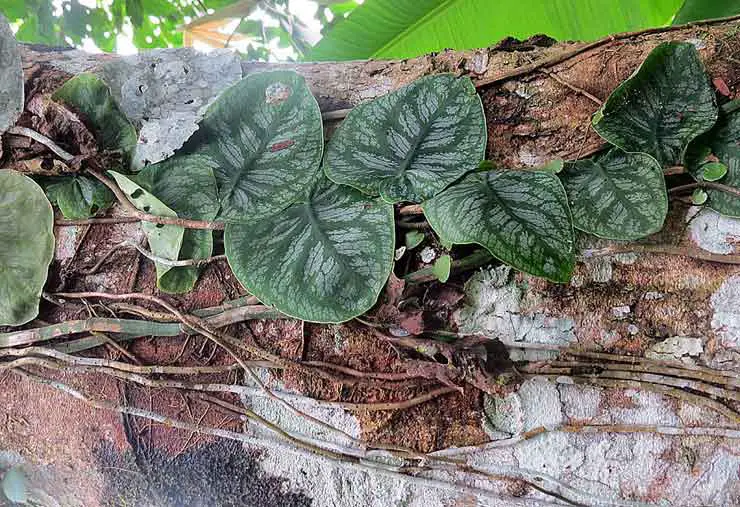
Humidity
As a plant originated from the tropical region, the Monstera dubia always loves to stay inside a humid environment. Humid levels higher than 60% make this plant looking fresh and stunning. It also somehow meets the water requirement of the plant.
Here are some tips you can use to keep your plant in a humid environment.
- The easiest way to maintain high humidity in your house is to use a humidifier. It simply automates the process of maintaining a particular humidity level. But you have to invest a good amount of money to buy a good reliable humidifier.
- You can also place all your indoor plants together. By the combination of their mutual transpirational effect, the surroundings will be humid.
- You can mist your plant regularly to keep them humid and hydrated.
- Use a pebble tray to keep the atmosphere humid. It is a natural way of providing humidity to the plants.
How often should you water Monstera dubia
The Monstera dubia plant loves a wet foot, but it should not be over wet. The soil should moist but not soggy and swampy. If the soil is overwatered the roots cannot get sufficient oxygen to breathe and eventually they started rotting. It ultimately leads the plant to die.
Therefore, watering is an important aspect when you are taking care of the Shingle plant.
There is no fixed watering schedule, but you have to constantly test the top two-inch of soil. It will tell you the whole thing about watering. If it is very dry, then go for watering. If it is moist, then there is enough juice for your plant to survive. Check on the following day.
Fertilizer
The Monstera dubia does not need any special nutrients. The liquid house plant fertilizer enough to provide all the necessary nutrients to the plant.
Apply at a dose recommended by the manufacturer.
Repotting
You have to repot your plant when the plant becomes root-bound. The root will start to pop out of the drainage holes, and they gradually clog the holes. It is not a good condition for the plant.
Therefore, you have to repot your plant as soon as possible, when you are getting these symptoms from your plant. Generally, a mature plant needs to be repotted once in every two years.
Process of repotting
- Choose a bigger pot than you are using now. A pot of 1 to 2 inches bigger size will be OK for the next couple of years.
- Remove the plant along with the pole on which it is growing from the old pot.
- Clean all the soil adhered to the roots.
- Check if there are any symptoms of root rot. If you are getting any rotted root then remove it, otherwise, it will infect your whole bunch of healthy roots.
- Fill the new pot with proper potting soil, and then plant your Monstera dubia along with the pole.
- Take proper care.
The plant will take some time to acclimatize in its new home. Once it has settled, it will start its regular growth.
How to propagate Monstera dubia?
It is easy to propagate the Monstera dubia using the stem cuttings.
Here is a step by step guide to propagating the Monstera dubia using stem cuttings.
- First, you have to prepare the stem cutting.
- Cut a part of the stem, which has two to three leaves along with a node, using a sterilized knife, or cutter.
- Place the stem cutting inside a jar filled with water, in such a way that the lower portion of the stem touches the water.
- After a few days, the roots started to develop.
- Then plant the cutting in a new plant with proper potting soil.
Take utmost care of the newly planted stem cutting, and it will start to grow.
Some common problems with Monstera dubia plant
These are some common problems you can have with your Monstera dubia plant.
Diseases
Here are some diseases to which the Monstera dubia plant is generally prone to.
Leaf yellowing
Leaf yellowing in the shingle plant may be due to overwatering. If the roots can not work properly inside the soil, they cannot supply the required nutrients and water to the plant leaves. Therefore they gradually turned yellow.
To solve this issue you have to either decrease the amount of water you are applying or change the potting mixture. The main reason for the above two remedies is to keep the soil aerated and drain out excess water quickly.
Leaf wilting
It is due to lack of watering.
To prevent the leaf wilting, you have to apply water more frequently.
The Monstera dubia plant needs less water, but a more frequent number of watering. So you have to take care of this.
Pest
This plant is prone to some common pests like aphids, spider mites, whiteflies, etc. These tiny insects suck the sap from the plant tissue, badly hampering the plant growth.
You can easily identify the pest infestation in your plant, by closely observing the plant. You will surely get some marks like white discoloration, and also you will get some of these tiny guys hovering around the leaves.
To control these pests, the best method is to spray neem oil. It will prevent all types of pest infestation and remove your existing pests on the plant.
Toxicity
Like other Monstera species, the Monstera dubia is also toxic. It will cause irritation in the throat, mouth, and swelling if engulfed accidentally. Therefore, keep this plant away from the children and pets.
Conclusion
It is a trickier part to get a Monstera dubia plant but once if you had managed to get one, it is a quite interesting plant to take care of. It will keep you engaging day long. It is not difficult at all to grow a Monstera dubia plant indoor. Real plant enthusiast always tries to keep diversified plants in their indoor plant collection, so this is going to be a real new experience for them, to hang with these cute guys.

